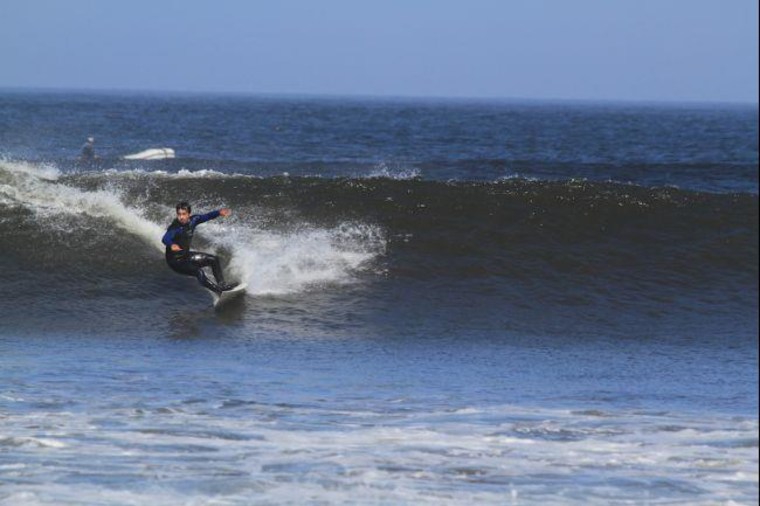CHICAMA, Peru — The cold Pacific waters massage my dusty feet as I survey the perfectly peeling break just 60 feet in front of me.
After walking nearly a mile barefoot over a baking, rocky desert, the sensory release — and relief — coming from my suffering soles is extreme.
Surfers are a hardy bunch and will put up with all kinds of suffering to catch a wave or two. But it’s not usually like this.
For most, wipeouts, sunburn, sharp coral, and even the risk of a hungry shark mistaking them for a juicy seal, are all taken as given.
Then there’s the paddling. That’s how surfers reach the break, lying face down on their boards, moving through the water front-crawl style.
It’s exhausting, slow work. Along with leaden arms, an aching back and a crick in your neck, you also have to avoid having your board slammed into your face by walls of seawater that pack more horsepower than an NFL lineman.
And all that for what amounts to a few fleeting seconds of the undeniably thrilling sensation of harnessing the ocean’s power and riding a wave. Even at some of the world’s best-known breaks, a ride can last under 10 seconds.
But not at Chicama. This remote, windswept break off Peru’s arid northern shore is thought to be the world’s longest wave. No one’s really sure, but the consensus among surfers is that its mile-long left is the record-holder. Check out what surfline.com has to say. Or surftoday.com’s take.
That makes Chicama yet another surfing highlight along Peru’s 1,500-mile coast. Here you’ll find breaks for all levels: from newbies just looking to learn to stand up to elite big wave riders risking life and limb on stories-high waves.
When Chicama’s four distinct sections connect, which requires a 6-foot-high swell, skillful surfers who have taken the days needed to study it can catch a ride for three to five minutes — an eternity in surfing.
That takes them from the point, an isolated rocky outcrop where the wave starts to peel, to a long industrial pier, jutting from the tiny fishing town of Chicama, on the barren coast.
Of course, they still have that 20-minute walk back to the point, and then the quick 60-second dash of paddling, to catch their next ride. But, given Chicama’s topography, the paddling-to-surfing time ratio here could not be tinier.
Even when the entire wave isn’t breaking, they’re still longer than most surfers’ fantasies.
“Chicama’s waves aren’t just long. They are perfectly shaped. They couldn’t break for as long as they do if they weren’t,” says Gino “Chato” Guillen, my surf-crazed neighbor in Lima who has agreed to show me around Chicama.
“You don’t need to surf the whole break to appreciate what’s special about this place,” adds Guillen, who is a surf instructor, judge on Latin America’s pro circuit and a tourist guide.
Chicama’s waves are also extremely reliable. While many other famous breaks around the world vary with the seasons, Chicama can be depended on year round to pump out beautifully formed breaks, like nature’s assembly line.
This was originally published on GlobalPost.
Other stories from GlobalPost:
How Death Of Top Prosecutor Is Rocking Argentina
